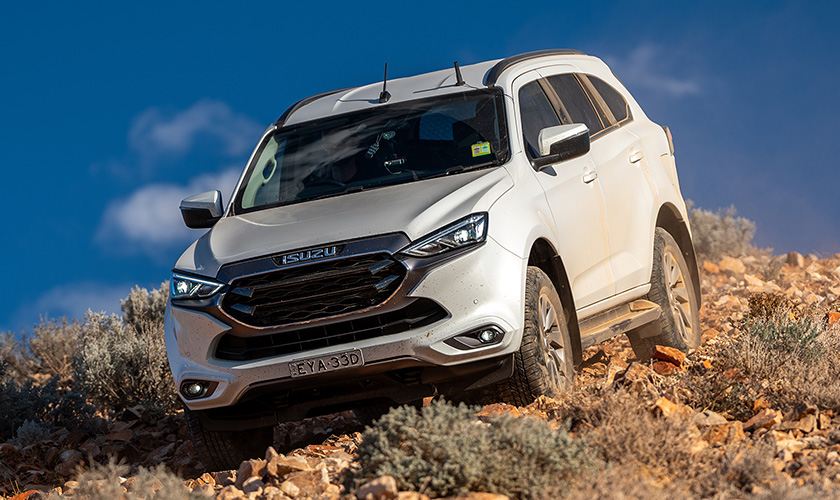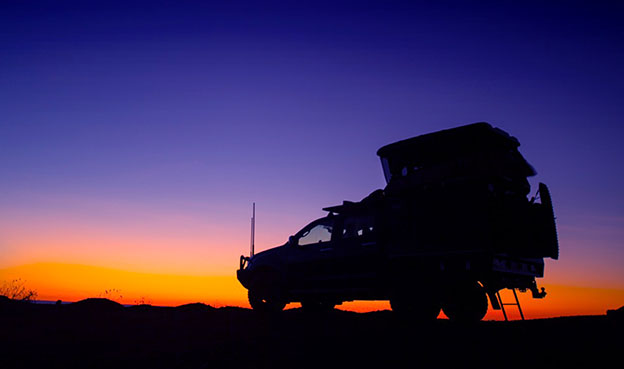

Planning on some four-wheel driving? You should! It’s the best way to extract maximum fun from your D-MAX or MU-X! Keep this advice in mind when you’re thinking about some of those surfaces that can come back to bite the unprepared.
1.Sand
Beach or desert, hot or cold, reducing tyre pressure on sand is crucial. Your tyre-pressure placard, located on the driver’s door sill, is there to give you a starting point for the bitumen. When sand beckons, ensure a 30-50 percent reduction on that PSI/kPa number. That creates a longer contact footprint between rubber and surface, which will float your boat rather than leave you floundering, and the straighter you can keep that steering wheel, the better. Use HIGH range (turn off traction and stability control) on the longer flatter sections and LOW range in the fluffy bits.
2.Gravel roads
Adopt my 20 percent rule. Drop both your speed and tyre pressure by 20 percent (stay under 80km/h compared to 100km/h and wipe 20 percent off the advised bitumen pressure). Rural dirt can be sketchy so reducing your speed and tyre pressure means less likelihood of losing it. Lastly, use HIGH range 4WD. It’s at your fingertips and it’s free!
3.Mud
Tackle mud like sand, especially in regards to steering. Maintaining consistent momentum is your goal and flailing away at the steering wheel is akin to tapping the brakes. Traction systems in new D-MAX and MU-X models can be helpful, but before we need to call on their help, some prudent tyre pressure reduction will make all the difference. And don’t be a mug—if you can see tracks going into a bog, but there are no exit tracks, find something better to do!
4.Rocks
‘Finesse’ isn’t a dirty word in the dirty world of off-roading. Far from it! Four-wheel-driving finesse is all about being very choosy about your wheel placement and throttle control, and you’ll find LOW range will help you achieve both in spades. Picking your way through a rock-strewn trail with multiple gradients calls for plenty of torque. LOW range’s multiplier effect provides this.
You should also get out and eyeball the route ahead before committing to it. This will limit the chances of contacts on low-hanging fruit, such as sidesteps, door sills and bumpers. Oh, and in case I didn’t mention it: tyre pressure. I like the 18PSI/125kPa to 20PSI/140kPa realm in rocky regions, such as we used on the Flinders Ranges trip to deliver grip and minimise tyre compromises.
5.Bitumen
Even the blacktop can be troublesome, especially in the wet. The first rains of the season can make driving particularly difficult, when a layer of invisible detergents and sludge built up on the road mixes with water to make for plenty of loosey-goosey moments. If you’re a believer in 40PSI/275kPa being your day-in, day-out pressure and irrespective of the load you’re carrying, you can expect some slippery moments because the contact patch of your tread face is now less than it should be.
Unless you’re carrying seriously excess baggage, 40PSI/275kPa is 25-30 percent more air than your D-MAX or MU-X wants or needs. If there are some sideways moments, rest assured help is always at hand with the high-speed saviour of many a modern motorist, Electronic Stability Control (ESC), trimming engine speed and tapping selective brakes to keep you safe and straight. It’s a life saver—literally.







